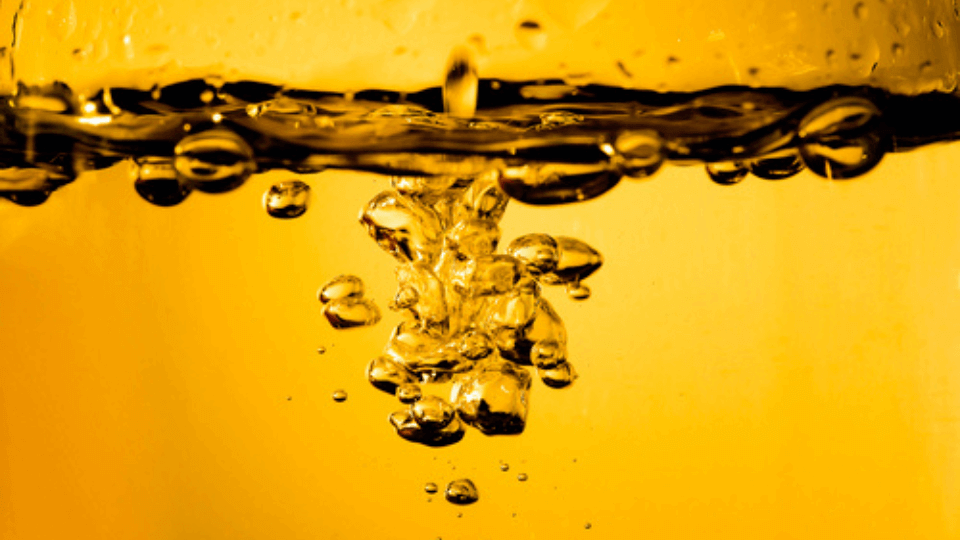Fats, much more than just a bad reputation

Despite often being associated with weight gain, fats are also an important source of energy – for pets too.
Fat is readily used as fuel by dogs, as their metabolism can more easily burn fat than that of cats – or humans. Dogs with higher energy demands, such as working, breeding or sled dogs, are therefore best fed on a diet with increased fat content rather than food with increased protein or carbohydrate content.
Fat – the nutrient
Declaration of ‘crude fat’ or ‘fat content’ is mandatory in the analytical constituents of complete dog and cat food. This includes both fats (solid at room temperature) and oils (liquid at room temperature) that are major nutrients alongside proteins and carbohydrates. Some fat or oil must form part of a diet to support the absorption of the fat-soluble vitamins A, D, E and K.
Over the past few years, there has been an increase in consumer awareness that not all fats are created equal. They certainly differ in their impact on consumers’ health. Dietary fat is absorbed and metabolized, serving as fuel or becoming part of the body. The composition of dietary fat impacts on the fat molecules that are stored in body cells and form part of them.
Fat types
The characteristics of fats are determined by their building blocks: fatty acids. Generally, we can distinguish saturated and unsaturated fatty acids based on chemical bonds in the molecule. In their own right, unsaturated fatty acids can be monounsaturated or polyunsaturated, depending on whether they have one or multiple unsaturated bonds. For pet diets, we are looking for a mixture of fatty acids.
Animal by-products used in dog and cat food are generally derived from production animals fed low-fat, grain-based diets. Because of these diets, the fat stores in the production animals consist mostly of saturated and monounsaturated fats.
Another major ingredient in many dog and cat foods is a source of carbohydrates, such as grains, pulses and potatoes. Energy from carbohydrates in pet food is metabolized by the dog or cat into more of the same type of fats, as found in animal by-products. To provide a more varied mixture of fatty acids, the challenge is therefore how to add polyunsaturated fats to the diet as well.
Healthy omega 3
Omega 3 is often marketed as ‘healthy’ and comprises a variety of fatty acids. They are added to pet diets, in part to balance against omega-6 sources including meat meals and cereals.
The metabolism of omega-3 fatty acids, and their inclusion in cell membranes, results in improved cardiovascular function and heart health. Anti- inflammatory function and a positive impact on immune function, are attributed more specifically to the fatty acids docosahexaenoic acid (DHA) and eicosapentaenoic acid (EPA). The benefit of both linseed and fish oil is that they help give a shiny coat, irrespective of the difference in fatty acid composition.
DHA and EPA have the ability to reduce inflammation in the body. Because of this anti-inflammatory characteristic, they are used in products aimed at reducing joint pain caused by inflammation, as is the case with osteoarthritis.
At the same time, these fatty acids help regulate the immune response and can be helpful in reducing the negative effects of allergies: both dogs and cats suffering from allergic dermatitis have been shown to benefit from DHA and EPA supplementation. Human studies show that supplementation of DHA and EPA also allows for increased muscle growth following exercise, by integration of the fatty acids into the cell membrane and enhanced protein absorption. Supplementation may be beneficial for working dogs, and also for senior dogs suffering from muscle deterioration.
EPA and DHA levels are relatively high in some fish oils, but not in the plant-derived sources listed earlier. Some of the plant-based fatty acids can be converted into DHA and EPA, but this conversion is very limited and is an ineffective approach for achieving the same benefits.
Fish versus algae oil
The healthy associations of DHA and EPA from fish oil, and their function in balancing the fatty acid composition of a diet, result in the regular inclusion of salmon oil in dry pet food diets, generally up to around 2%. It is a frequent addition to puppy and senior diets, in particular, to support cognitive development and maintain brain function. In humans, covering DHA and EPA requirements supports proper fetal development, including neuronal, retinal and immune function.
The composition of fish oil differs, depending on the fish species, its diet, and the season and habitat. In contrast to common expectations, not all fish oil contains high levels of omega 3, but monounsaturated and saturated fatty acids may be prominent as well. The objective of fish oil addition (e.g. claims and functionality) will determine the choice of source to ensure that goal is achieved.
Fish oil composition is dependent in part on the diet of the fish. Many fish diets include algae, and these plants provide the fish with DHA, which is then stored in the fish’s body. Removing the fish from the cycle seems a more efficient way of increasing DHA levels in a human or animal’s diet, but there are some considerations. Algae may be taken from the sea or ocean, or can be grown in a controlled environment in containers on land.
Other considerations
Fish and algae oils are often marketed for their DHA levels, but EPA levels can vary between brands, so choose the right source for your needs and claims. Beneficial oils derived from algae grown in tanks on land may currently use more resources than the same amount of oil derived from fish. However, some are produced just as sustainable – if not more – as fish oil.
Due to the waters in which fish live, in contrast to the controlled environment of algae tanks, fish oil requires an additional purification step to remove the likes of heavy metals – a process not needed for algae oil.
Vegetarian diets only have the algae option and therefore bypass the negative connotations of animal well-being, overfishing, and the trawling associated with fishing. With the eye to pet food manufacture, oils allow for a more concentrated format of beneficial fatty acids. There are powdered forms available, which are exposed to air due to their format and are therefore more susceptible to oxidation.
